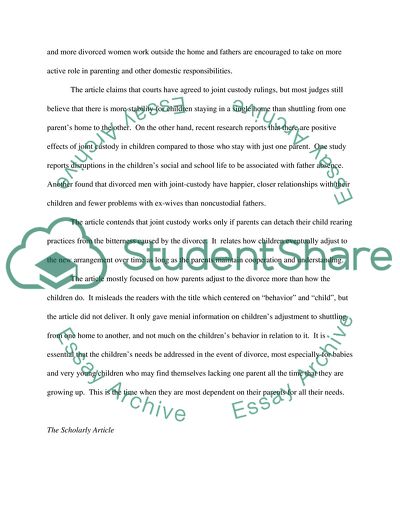Cite this document
(In Consideration of the Youngest Children of Divorce Article, n.d.)
In Consideration of the Youngest Children of Divorce Article. https://studentshare.org/psychology/1746000-use-a-popular-media-article-and-an-scholarly-article-that-relates-to-some-aspect-of-psychology-summarize-the-articles-briefly-and-critically-analyze-it-in-terms-of-one-or-more-psychological-theories
In Consideration of the Youngest Children of Divorce Article. https://studentshare.org/psychology/1746000-use-a-popular-media-article-and-an-scholarly-article-that-relates-to-some-aspect-of-psychology-summarize-the-articles-briefly-and-critically-analyze-it-in-terms-of-one-or-more-psychological-theories
(In Consideration of the Youngest Children of Divorce Article)
In Consideration of the Youngest Children of Divorce Article. https://studentshare.org/psychology/1746000-use-a-popular-media-article-and-an-scholarly-article-that-relates-to-some-aspect-of-psychology-summarize-the-articles-briefly-and-critically-analyze-it-in-terms-of-one-or-more-psychological-theories.
In Consideration of the Youngest Children of Divorce Article. https://studentshare.org/psychology/1746000-use-a-popular-media-article-and-an-scholarly-article-that-relates-to-some-aspect-of-psychology-summarize-the-articles-briefly-and-critically-analyze-it-in-terms-of-one-or-more-psychological-theories.
“In Consideration of the Youngest Children of Divorce Article”. https://studentshare.org/psychology/1746000-use-a-popular-media-article-and-an-scholarly-article-that-relates-to-some-aspect-of-psychology-summarize-the-articles-briefly-and-critically-analyze-it-in-terms-of-one-or-more-psychological-theories.


